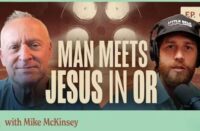
Originally published in Christian Daily
The earliest known Christian liturgical book with the earliest complete texts of 1 Peter and Jonah was sold to an unnamed bidder on Tuesday at Christie’s auction house in London for £3.065 million (R72.125 million), according to reports.
Called the Crosby-Schøyen Codex, the Coptic manuscript on papyrus paper dates from the mid-third century to fourth century. “The earliest known book in private hands and one of the earliest books in existence,” according to Christie’s auction description.
It also has “one of the most complete texts of Melito’s tractate on the Passover. One of the earliest witnesses of Maccabees in any language.”
The 146 x 152mm square-format, single-quire papyrus codex with 51 “complete or substantially complete leaves” was initially up for auction with a listing price of between two and three million British pounds.
The history of the unique book comes from four “outstanding finds of papyri and parchments”, which “transformed study of the Bible and early Christianity” in the 20th century, according to Eugenio Donadoni, Senior Specialist, Medieval & Renaissance Manuscripts for Christie’s.
“The Dead Sea Scrolls, which were recovered from 1947 in a series of discoveries in the Judaean Desert, are chiefly in Hebrew with some Greek and Aramaic material, and date from the 2nd century BC to the 1st century AD,” Donadoi wrote for the listing.
“The other three finds were preserved in the dry sands of Egypt: the ‘Chester Beatty Biblical Papyri’, a group of 11 papyrus codices of Greek biblical texts dating from the 2nd to 5th centuries, found in 1930; the Nag Hammadi Library, 12 papyrus codices of Gnostic Christian texts in Coptic dating from the mid-4th to early 5th centuries, found in 1945; and the Bodmer Papyri found in the early 1950s.”
The Crosby-Schøyen Codex is part of the Bodmer Papyri find, which was unrecorded. For that reason “its precise limits and location have been the subject of much debate”. Martin Bodmer, who lived from 1899 to 1971, was a Swiss bibliophile, collector and scholar.
Donadoni added that Bodmer’s secretary, Odile Bongard, who bought many of the purchases in Egypt for him, had been told by a dealer called Phocion Tano, that the manuscripts were discovered in an underground chamber such as a tomb or storehouse, in “Mina or Minia near Asyut”.
“Of these Egyptian finds, the Bodmer Papyri, in various forms of Coptic, Greek and Latin dating from the 2nd to the 7th centuries, are both the most numerous, the most intact and the widest ranging in language, date and content. They comprise biblical texts, Christian writings and pagan literary texts,” wrote Donadoni.
“Their discovery revolutionised understanding of the history of early Christian writings, for they surpass ‘in the quality of their preparation, in the length of their texts and in their textual significance’ all previous findings of Biblical papyri.”
Please help us to keep on publishing news that brings Hope in Jesus:
>> Donate >> Become a Super Subscriber
VISIT OUR YOUTUBE CHANNEL: https://www.youtube.com/gatewaynews100
COMMENTING GUIDELINES
You are welcome to engage with our articles by making comments [in the Comments area below] that add value to a topic or to engage in thoughtful, constructive discussion with fellow readers. Comments that contain vulgar language will be removed. Hostile, demeaning, disrespectful, propagandistic and off-topic comments may also be moved. This is a Christian website and if you wish to vent against Christian beliefs you have probably come to the wrong place and your comments may be removed. Ongoing debates and repetitiveness will not be tolerated. You will also disqualify yourself from commenting if you engage in trolling.






